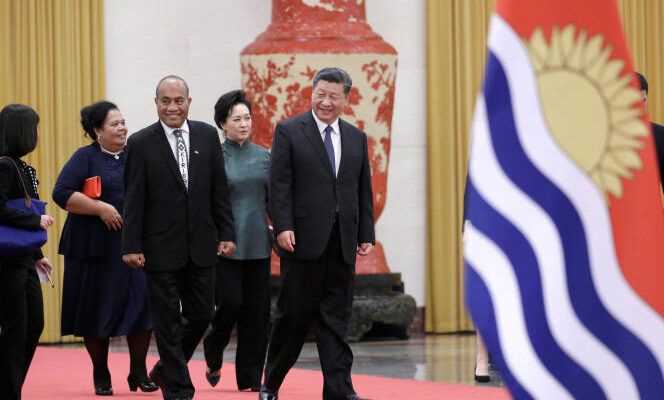Lost in the vastness of the South Pacific, the place is strategic because it is located halfway between Hawaii and Australia. Kanton Atoll is well known to the US Air Force, who occupied it in 1942 and 1943 to strike the Japanese on the surrounding islands. It is expected to become a Chinese base soon, Reuters reported on May 5.
This islet, almost uninhabited and without fresh water, belongs to the small state of Kiribati (120,000 inhabitants). It has been part of a protected area since 2006. But the Chinese project would consist of building facilities there and rehabilitating its precious 2 km airstrip. It had been built by the Pan American for the refueling needs of its long haul and was abandoned in the 1960s when civilian planes gained more fuel autonomy. Neither Reuters nor The world were unable to obtain official confirmation from the Kiribati authorities.
In a region of the globe marked by the American imprint, the affair resonates, because it is part of the campaign of influence initiated by Beijing with the Pacific States, with investments and credits.
Commercial and military installations
Among the Chinese projects underway in Kiribati is also that of a port terminal for containers. With a vast exclusive economic zone, important marine resources, Kiribati turned to China at the end of 2019 by joining the project of the “new silk roads” of President Xi Jinping as he posted up to so his support for Taiwan – the Solomon Islands did the same. In the state of Vanuatu, further south, the construction of a wharf capable of accommodating Chinese military ships is debated, and remains unresolved.
Other Pacific archipelagic states maintain privileged diplomatic and economic relations with Taiwan for the time being: the Marshall Islands, Tuvalu, Nauru, Palau. Elected against a pro-Beijing candidate, Surangel Whipps, president of Palau, declared in early April that if there was only support for Taipei, “We would be this one, because Taiwan has been by our side from the start”. Mr. Whipps called on the United States to set up a military base in his country.
In the service of its economic autonomy, China has partially or fully bought dozens of ports or coastal bases in the world since the end of the 1990s. Southeast Asia is its priority – with the ports of Gwadar in Pakistan , Hambantota in Sri Lanka, Kyaukpyu in Burma, or Tanjung Priok in Indonesia. The Pacific is part of a longer-term vision. But Chinese advances are already raising concerns there, especially since these installations have a dual, commercial and military vocation – the latter dimension not being recognized by Beijing. “The vision is first and foremost economic”, but the forced construction of a navy by China “Aims to protect the development and overall interests of the country”, recalls Hugues Eudeline, a former French officer specializing in the Chinese navy. This one “Relies on large ships, whether aircraft carriers or landing ships, and it requires stopovers and logistical support points”.
You have 38.61% of this article to read. The rest is for subscribers only.
